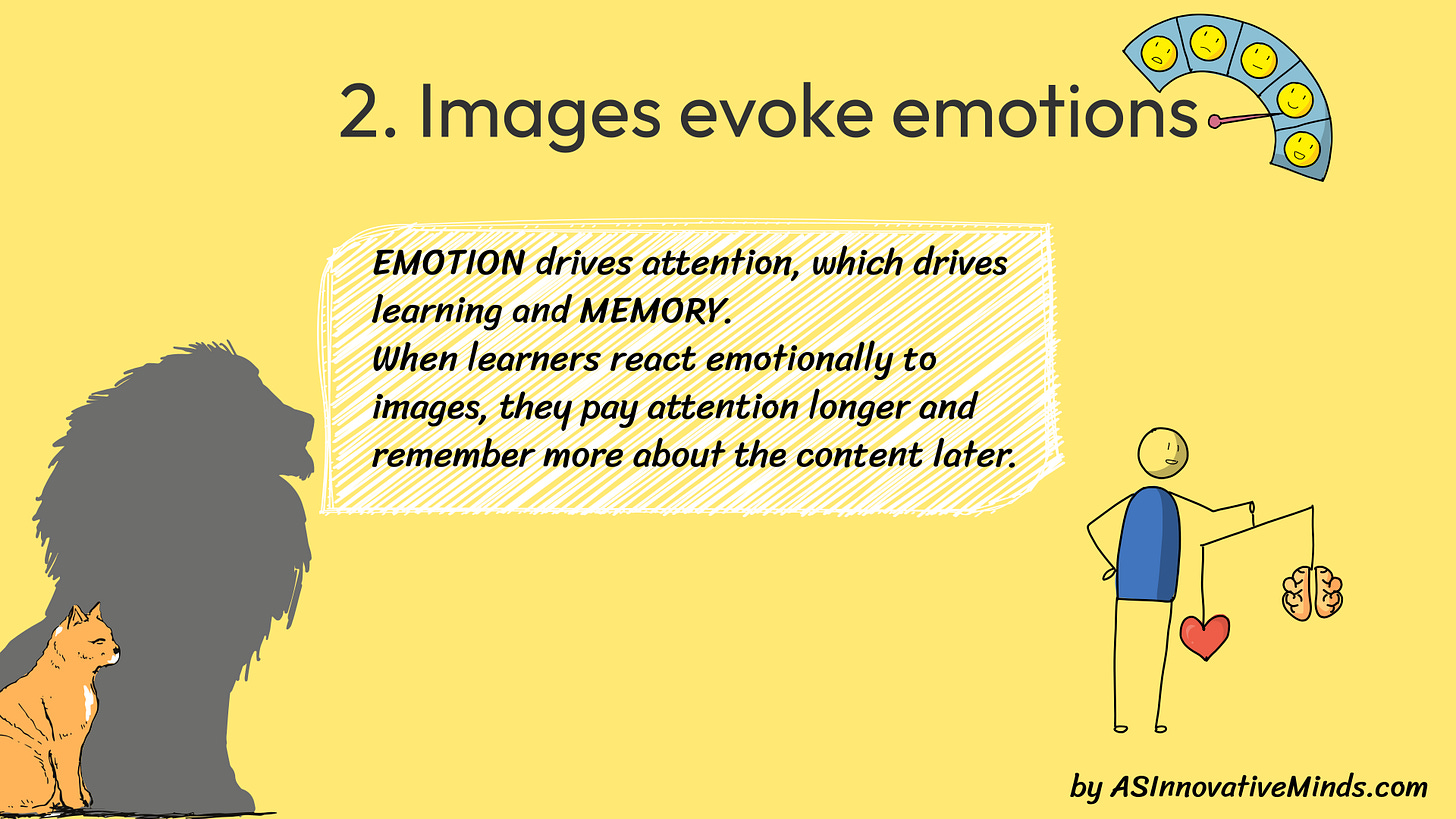Why Do Images Stick?
The human brain rather thinks in pictures than words. Pictures mean here mental images that the words describe.
Images can be in this case anything from: stories, metaphors, analogies, cartoons, photos, graphics, maps, graphic organizers, media, and drawings. Anything that creates a mental picture.
🏃 Images are a brain turn-on: The more sensory the image is, the longer the brain stays interested in it. Learners will pay more attention and stay focused longer whenever images are used to teach content.
🏃 Images evoke emotions: It is almost impossible for the human brain to remain focused on anything that is totally devoid of emotion. Why? Because emotion is the brain’s signal to pay attention. Robert Sylwester, in his book “A celebration of neurons,” writes: “Emotion drives attention, which drives learning and memory”. When learners react emotionally to images, they pay attention longer and remember more about the content later.
🏃 Images create shortcuts: Images can shorten the amount of teaching time needed for effective learning transfer. They help learners translate information into action, without having to put everything into words first.
One-phrase summary:
We do not see with our eyes, we see with our brains.
We remember images, we forget words.
When they picture it and feel it, they get it.
Resources:
Book: “Using brain science to make training stick” by Sharon Bowman
I am inviting you to register your spot in the new on-demand training:
Facilitation - neuroscience behind - a 3h online session where I would explain some neuroscience principles I use in most of my workshops in order to create brain-based workshops that are universally applied independent of culture, industry, etc.







